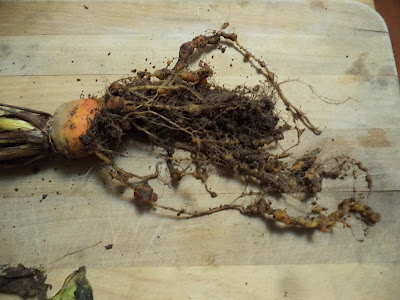Every summer, around mid-July or early August, I start hearing complaints about cucumber, squash, and melon plants whose leaves have acquired that gray-ish look that goes with Downy Mildew. Productivity slows, and the plants die. Out of desperation (possibly) and a longing for more fresh cucumbers and squashes and melons (likely), many gardeners treat their ailing plants with an array of sprays, from baking soda mixtures to compost teas to official fungicides purchased in the pesticide section of a garden center. All of these can slow down the spread of Downy Mildew to some extent, but none will actually cure the plants.
In general, the inability to cure the problem is a good reason to grow the most disease-resistant varieties we can find.
UGA Extension publications list varieties that are good to grow in our area, and a big reason varieties make it onto the list is that they show pretty good resistance to diseases that are common here in the Southeast.
These are the currently recommended cucumbers: Salad Bush Hybrid, Bush Crop, Fanfare, Burpless Hybrid, Diva, Marketmore, Straight Eight, Sweet Slice, and Sweet Success.
When I first started gardening here, about 25 years ago, I tried several different varieties of cucumbers before settling on Straight Eight (notice that it's on the recommended varieties list) as the best for my yard, but I later switched to Straight Nine, a selection of Straight Eight from
Sand Hill Preservation, and each year I find that it out-performs most other varieties in local gardens. Part of its charm is that it is slower to succumb to both Downy and Powdery Mildews.
This year, though, I am going to grow another cucumber variety alongside Straight Nine. I found the seeds through my
trip to Monticello with a couple of gardening friends last September. We had a great time meeting other attendees at the Harvest Festival and asking about their gardens, but we also met some seed producers, one of whom was a young man from
Commonwealth Seed Growers. After a brief conversation with the grower, we bought a few seed packets and added our names to his mailing list, and then we moved on.
When the catalog showed up in the mail, though, I saw that a big focus of the group is identifying and producing varieties of cucumber/squash/melon family plants that resist Downy Mildew. Talk about a great gift to gardeners and small farmers here in the Southeast!
My seed order from that group includes a packet of the cucumber variety DMR-264, a selection released from Cornell University. The variety has shown excellent resistance to Downy Mildew on the farm where it is being grown out for seed, and I am very interested to see how it will compare to Straight Nine.
I have friends, including some at local Community Gardens, who have been looking for mildew-resistant squashes, melons, and cucumbers, and it seems possible that Commonwealth Seed Growers could have the seeds of our dreams.
I surely am hoping so. Meanwhile, next weekend, I will be looking into more new varieties and other gardening discoveries at the Georgia Organics conference. It will be great to spend some time with other people who are so very focused on growing good food.







